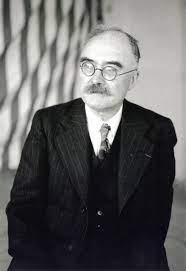Halbwachs, Maurice

Bio: (1877-1945) French anthropologist and sociologist. Maurice Halbwachs was one of the most important members of the group that gathered around Emil Durkheim and the magazine L'Année Sociologique. He has lectured at the universities of Strasbourg, the Sorbonne, and the Collége de France. He died in a Nazi concentration camp a few months before the end of World War II. Halbwachs continued to study many topics that Durkheim also studied: the causes and statistics of suicides, collective consciousness, and social morphology. His approach to these topics was critical of Durkheim's approach. Unlike other of Durkheim's followers, he paid great attention to the social classes (especially the problems of the working class), as well as to urban sociology.
In the books On collective memory (1925) and The Collective Memory (1950), Halbwachs develops the theory of collective consciousness and collective memory. It brings the collective consciousness (mentality, needs, behaviors) in connection with production relations. In industrial societies, the hierarchical relationship of social classes becomes stable as different classes adopt different values and ideals. These different group consciousnesses ensure the cohesion of the group and its continuity. The values of the working class differ the most from the average values in society. He shifts the focus of working-class study from the relationship of production to the study of living standards and consumer habits. Collective memory is determined by social determinants. Collective memory is a social construct that changes throughout history, with social changes. Collective memory takes precedence over individual memory. He believes that collective memory differs between different classes and that the nobility knew best how to preserve memories of real events, the bourgeoisie subjected memory to utilitarian values, while the working class is indifferent to the past because it has inert behavior and changing composition.
Within the framework of social morphology, Halbwachs studied the population and religious groups, their relations, and their distribution within cities. He returns to one of Durkheim's most important topics - suicide. Halbwachs believes that Durkheim was wrong to focus on successful suicides. He notes that women are more likely to have "unsuccessful" and men "successful" suicides. He also changes the basis for explaining the differences in suicide rates between Catholics and Protestants and claims that it is not religion, but that lifestyle and housing patterns are crucial. Catholics mostly live in villages where there is greater social integration, while Protestants mostly live in cities, where individualistic values dominate.
Fields of research
Anthropology Capitalist Class Character, Social Christianity City Collective Conscience Integration Morality Personality Protestantism Religion Suicide Working ClassTheoretical approaches
Durkheimian SchoolMain works
La théorie de l'homme moyen (1913);
Les Cadres sociaux de la mémoire (1925);
La Population et les tracés de voies à Paris depuis cent ans (1928);
Les Causes du suicide (1930);
L’Évolution des besoins dans les classes ouvriéres (1933);
Morphologie sociale (1938);
La Topographie légendaire des Evangiles en Terre Sainte (1941);
Les classes sociales (1942);
La Mémoire collective (1950).
Works translated into English:
The Causes of Suicide (1978, in French 1930);
On Collective Memory (1992, in French 1950);
Psychology of Social Class (2021, in Franch 1942).

